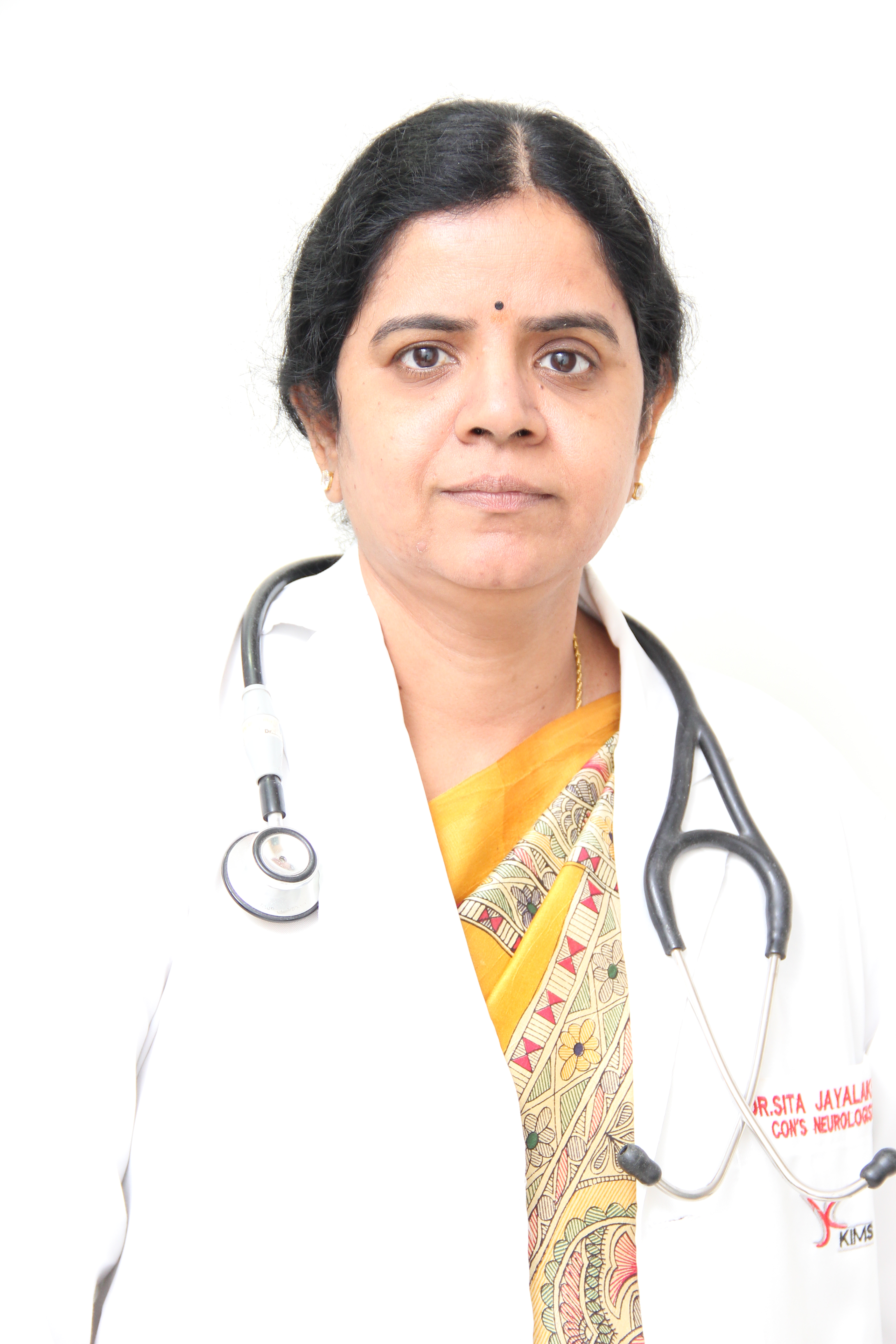Dr. Sita Jayalakshmi
Consultant Neurologist
Kims Hospitals, Secunderabad
Epilepsy is a neurological disorder in which nerve cell activity in the brain becomes disrupted, causing seizures or periods of unusual behaviour, sensations and sometimes loss of consciousness. Seizure signs and symptoms may include: Temporary confusion, A staring spell, Uncontrollable jerking movements of the arms and legs, loss of consciousness or awareness and psychic symptoms. About 1 in 25 people in India develop seizures. The most important causes of epilepsy include peri-natal brain injury, infections, tumors, developmental abnormalities in the brain, head injury, and stroke. All of these conditions are preventable. However, Epilepsy has no identifiable cause in about half of those with the condition. In the other, the condition may be traced to various factors like genetic influence, brain tumours, developmental disorders of the brain. Epilepsy may be precipitated by flickering lights, lack of sleep/tiredness, stress, excitement, missed meals, high temperature, menstrual periods, missed or late medication. The problems with seizures include falls, accidents, burns especially in women while cooking and emotional health issues like depression, and anxiety. One should seek medical attention if the seizure lasts more than five minutes, if the consciousness doesn’t return after the seizure stops, if a second seizure follows immediately, if one has have a high fever, if pregnant, or if got injured during the seizure. If one experiences a seizure for the first time, seek medical advice. Seizures during pregnancy may pose dangers to both mother and baby, and certain anti-epileptic medications increase the risk of birth defects. Most women with epilepsy can become pregnant and have a healthy baby. They need to be carefully monitored throughout pregnancy, and medications may need to be adjusted.
Dos during a seizure
— Stay calm
— Assess danger to child- move if in danger
— Protect their head
— Loosen tight clothing, remove spectacles
— Once seizure has finished aid breathing by gently placing them in the recovery position, by turning the person to one side
— Stay with the child until recovery is complete
— Reassure and re-orientate the child, tell them they have had a seizure
— Allow the person a period of rest /sleep afterwards if required
Don’ts during a seizure
— Do not panic and do not be afraid!!!
— Do not insert spoon or any such articles into the mouth.
— Do not restrict convulsive movements as it may cause fracture.
— Do not try to insert a gag in the mouth it may cause difficulty in breathing and also hurt the helpers fingers.
— Do not crowd around the patient.
— Do not give water or any other liquid till he is fully consciousness.
— Do not try and physically hold the person, this may injure both the person and the helper.
— Medical aid is usually not required except in case of the person being in water and drowning is a danger then mouth to mouth resuscitation maybe required. The duration of the seizure is usually not more than 2 minutes after which the person enters a state of deep sleep.
Most people with epilepsy can become seizure-free by taking one anti-seizure medication, called anti-epileptic medication. Others may be able to decrease the frequency and intensity of their seizures by taking a combination of medications.
Surgery for Epilepsy
Medications can control seizures well in ~ 70% of people. But in 30% of patients, medicines are not effective and in few of these patients, brain surgery to remove the focus causing epilepsy may be a good option for seizure freedom or even a significant reduction in the disabling seizures. With advances in MRI techniques and new surgical techniques along with ways of identifying areas to be removed, Epilepsy surgery procedures being done with good success. Surgery can be performed on both children and adults. Epilepsy surgery is a highly specialized procedure and performed by highly experienced surgeons only in few centres. Epilepsy surgery is considered only when person is thought to have a very good chance of becoming seizure free after surgery. Over 70% of people who have epilepsy surgery become completely seizure free.
Vagal Nerve Stimulation or VNS is a pacemaker, it is another type of treatment for epilepsy. It aims to reduce the number, length and severity of seizures a person has uncontrolled epilepsy. VNS is a treatment for epilepsy where a small generator is implanted under the skin below the left collar bone. This is connected to a lead with three coils at one end. These coils are wrapped around the vagus nerve in the left side of the neck in a small operation. The VNS stimulates the vagus nerve at intervals to reduce the frequency and intensity of seizures.


